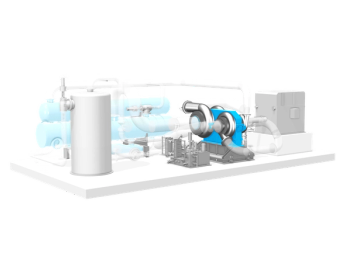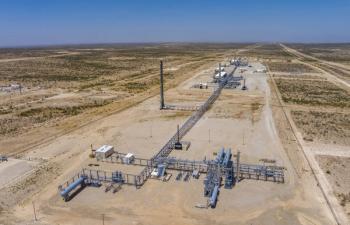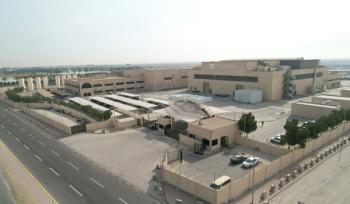
Myth: THE PARTICULARS OR PARTICULATES ARE IMPORTANT
The automotive industry in Europe, especially in Germany, is in turmoil. Certain European cities are considering a ban on vehicles with diesel engines from downtown areas. The diesel engine, long considered a better alternative to hybrid cars, may have received its death blow. What has happened?
Government regulators, prompted by environmental groups, are alarmed by significant levels of small particles in the air in downtown areas of large European cities (this is also the case in the U.S. and Asia). Small particles sized below 10 microns (PM10) can enter the finest branches of the human lung and are suspected to be the cause of serious ailments. Stuttgart, Germany, home of Porsche and Mercedes, and the former home to one of the authors of this column, is among them.
For turbomachinery engineers the question must be asked: Are gas turbines (GTs) also major emitters of micron level particulate matter? In this context, we primarily focus on industrial GTs that burn gaseous fuels.
Regulators have already created a framework of rules that also apply to GTs. These regulations often limit the annual production of particles below a certain size in tons per year. There are regulations for PM (all particles), PM10 or PM2.5 (particles below 2.5 microns). While in the U.S. the criteria is tons per year, in most other places it is based on particle concentration (mg/Nm3).
Before we answer the main question, let’s consider the technical details. PM10 and PM2.5 emissions from the combustion of gaseous fuels in industrial systems can originate from sources such as: combustion of sulfur and chlorine to acid aerosols and salts; incomplete fuel combustion to form soot or high mole weight organics; vaporization; condensation or transmission of volatile elements in the fuel or combustion air; corrosion or erosion of system elements; entrainment of debris; and particle agglomeration and breakup.
Additionally, post-combustion, emission-control methods, specifically Selective Catalytic Reduction (SCR), while lowering NOx emissions, can also contribute to PM10 and PM2.5 emissions.
For clean natural gas as fuel, and reasonably clean ambient air, the continuous combustion process in a GT produces practically no particulate. The air and exhaust gases in a well-maintained GT never contact lube oil, and the combustion is continuous and well mixed with the air-to-fuel ratio controlled throughout. This further contributes to near PM-free emissions.
In many instances, most particles in the exhaust may have entered the engine with the combustion air. Given the capability of modern GT air filtration systems to remove significant amounts of particles even below 2.5 microns in size, GTs act as an air cleaner in some locations.
Particulate matter comes in condensable and filterable (non-condensable) form. Filterable PM is essentially solid. Condensable PM consists of liquid or solid droplets that form in the exhaust gas when it cools down.
If we consider the combustion mechanisms described above, and in the absence of mechanical issues with the GTs while using clean fuel and combustion air, the only particulates that can potentially form are of the condensable variety.
Certainly, fuel-bound sulfur can contribute to particle formation, but the sulfur level in natural gas is usually extremely low. Given the small size of the PM liquid droplets, some may evaporate soon after leaving the gas turbine exhaust.
A key point of contention are the test methods used to detect particulates in the GT exhaust. Some older test methods or methods with short durations lead to unrealistically large or widely varying PM measurement results.
But even carefully and consistently executed tests will have uncertainties that are on the same order of magnitude as the number of particles present in the exhaust stream. Recently analyzed data shows that older tests on the same GT exhibit significantly higher particle levels, and significantly higher variability than newer, more advanced tests. Lastly, some inappropriately applied test methods can generate additional condensable particles in the particle collection system.
It does not really matter whether the PM10 or PM2.5 levels are measured as particles in the gas turbine exhaust. If present, they are usually much smaller than PM2.5. Thus the measured PM, PM10, and PM2.5 values are mostly the same.
This explains part of the measurement problem: very small particles in extremely low concentrations are hard to detect and measure accurately. High measurement uncertainties and wide test variations often result.
Now, let’s answer the question at the beginning of the article: Natural gas-fired gas turbines may be more of a solution than a problem where particulates matter. These GTs have extremely low PM emissions. Often, because of their fine inlet filtration and the massive amount of air captured, GTs act as an air filter than a particulate matter emitter.
The authors want to acknowledge the support of Leslie Witherspoon who contributed to this article.
Newsletter
Power your knowledge with the latest in turbine technology, engineering advances, and energy solutions—subscribe to Turbomachinery International today.




